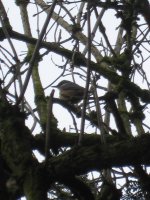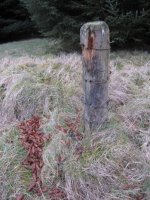On Sunday evening, as well as a few other times this winter I have done the gull roost stretching between Portobello & Musselburgh from Eastfield.
Despite the huge numbers of birds present (inc several thousand Common.s at the moment) there was a distinct lack of large gulls in the roost. I know Musselburgh holds quite a few LWHG but why the lack of any off Portobello!
Do LWHG go into Leith Docks perhaps, anybody know?
Can't answer that specific query but for the general case the large gulls always take the prime positions. At Seton if the tide is low and the Long Craig rocks are accessible the larger birds (GBB/HG) will hog them with the smaller species (CG/BHG) initially all on the shore, then on the shallows waters, though ultimately all go onto the sea at last light, I have never seen birds remaining to roost on dry land. Even within the small gulls there are
sometimes zones, with the Common Gulls over the burn outflow but concentrations of BHG sometimes occurring further east over the sandy shore. The Meds prefer to associate with the latter, though of course are often first picked up when they come into the burn itself for the fresh water. All this you already know I'm sure, but I wonder if there's something similar at Musselburgh, the "prime" spot is the burn mouth (with fresh water) where the large gulls will be dominant whilst the small species have to make do with the adjacent areas then onto the sea. I do recall seeing the LWHG still concentrated nearer the Eskmouth even late on when on the sea.
What proportion of the large gulls actually stay to roost is another question worth considering, I have very rarely confirmed this at Seton, often they are apparently just pre-roost concentrations that steadily dwindle as the light fades, I believe many continue on towards the North Berwick islands; I have not checked those out much myself though I do recall seeing 200 Herrings gathered in the Bass Rock (16:30hrs, 15/11/08, i.e. 25 mins after sunset) and would be interested to know more about if this is a regular roost, or other islands used. A further point is whether those LWHG have actually gone to roost at all when you are looking, last week there were still 80 feeding in Seton harbour, using the lights, half an hour after sunset whilst the bulk of the main roost at Seton was settled long before that - and of course can be feeding well into the night or even foraging in urban areas, even in winter (Herrings still at Macdonalds, Kinnard Park well after dark back in early Jan).
I could probably ramble on some more but it will get boring, if anyone has any hard evidence of where the Edinburgh LWHGs actually go I'd also be very interested to know...
[Naturally I'm interested in your other post too but I have nothing particular to add on what these darker birds might be; given the frequency of known LBBxHG occurrence and I recall some knowledge of their typical appearance in literature do you think it is possible to definitely exclude these?]






